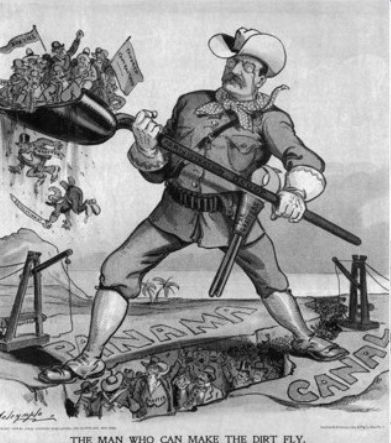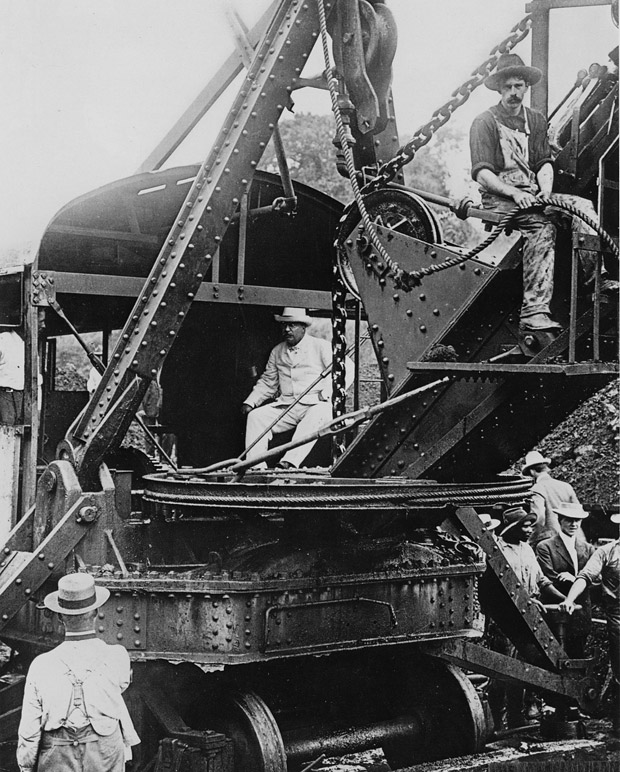Our President Violates Tradition by Traveling Abroad

On November 9, 1906, 111 years ago this week, The New York Times ran an article declaring that the President of the United States was about to violate “the traditions of the United States for over a hundred years.”
Theodore Roosevelt had already done many daring and unexpected things. He had gained national renown for resigning his position in the Navy Department so he could fight in the Spanish-American War, and his brash personality remained a cornerstone of his popularity. On this particular November day, he was about to do something that no sitting President had ever attempted. He was going abroad.
One of the hallmarks of Roosevelt’s administration was its engagement with the rest of the world. The President kept up active correspondence with numerous European monarchs and heads of state. He supported efforts to create institutions of international arbitration and an international court of justice. And he was an avid interventionist who supported an expanded military role for the United States in the Western Hemisphere. In that very same year, 1906, the twenty-sixth President was awarded the Nobel Peace Prize for helping to conclude a peace between the warring nations of Russia and Japan.
Perhaps of greater consequence than all these other international projects, though, was his interest in the tiny nation of Panama. For years, American and European merchants had looked toward the Isthmus of Panama with ambitious eyes. The narrow strip of Central American land was a tempting location for a canal between the Gulf of Mexico and the Pacific. Generations of businessmen and voyagers had found their travels and shipping frustrated by the immense landmass of the Americas. In order to transport goods to California from the East Coast or Europe, shippers had to either send their vessels on a long and dangerous journey around the southern tip of South America or have them unload at a port somewhere on the Atlantic or Gulf coast and complete the trip by land. Roosevelt was far from the first American to reason that there must be a better way.

In November 1906 he was setting out on a journey to survey the progress of his project to build that better route between the Atlantic and the Pacific. Seven years earlier, in 1899, Congress had created an Isthmian Canal Commission, charged with plotting out a route for a canal through Panama, but it had taken several years and multiple treaties to guarantee the United States access to and ownership of the land needed to begin construction. Finally, in 1903, the United States under Roosevelt had arrived at a deal with a new Panamanian government by which the U.S. would control the canal’s route across the isthmus as well as a five-mile strip of land on both sides and a few islands in the Bay of Panama. In exchange for this, the government would pay Panama $10 million initially and $250,000 each year starting in 1912.
It was a remarkably good deal for the United States. Some observers grumbled that it was too good, particularly given that it had been arrived at only after a new, U.S.-friendly Panamanian government had seized power by force. When Roosevelt disembarked in Panama, however, there was no sign of bitterness or resentment on the part of the Panamanian people. His ship arrived in the middle of a storm, but the weather did little to dampen the energy with which he was received. As he rode through Panama City in the pouring rain, with his wife beside him, he looked out on buildings and streets that had been scrubbed clean in anticipation of his arrival. He could see flags flying in window after window. He basked in the knowledge that his hosts had formally declared a day of “joy and exalted enthusiasm” in honor of his arrival.
The trip was far from just ceremonial, though. Roosevelt wanted to see firsthand the progress that was being made on the construction of his canal. Contemporary accounts of his expedition highlight the characteristic rigor of his travels. Intentionally visiting the grittiest of the work sites, he didn’t hesitate to tramp through mud or ride on horseback in order to gain access to unfinished portions of the canal. He also went out of his way to witness the conditions in which the project placed its workers. On one of the first days of the tour, he and the First Lady decided not to attend a lavish luncheon to which they had been invited, at the luxurious Tivoli Hotel. Instead they visited a mess hall in which canal workers ate their meals. Sitting down among several hundred laborers, the Roosevelts dined on a 30-cent lunch. At the Cristóbal work site, the President spent most of his time touring workers’ living quarters.
When Roosevelt sailed for home aboard the battleship Louisiana, he had been away for two weeks altogether. Before leaving Washington, on November 9, he had said, “Good-bye: I am going down to see how the ditch is getting along.” Returning, he confirmed that it was already far more than a ditch. It would be a legacy of his Presidency that remains an invaluable world treasure to this day.
